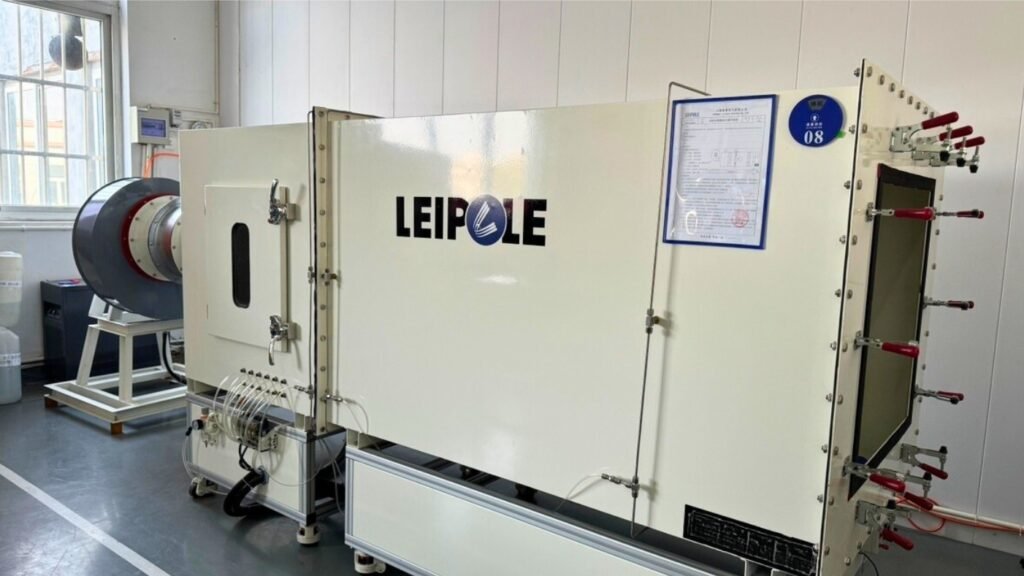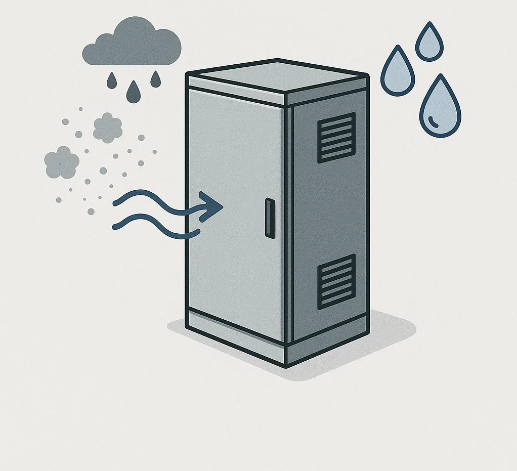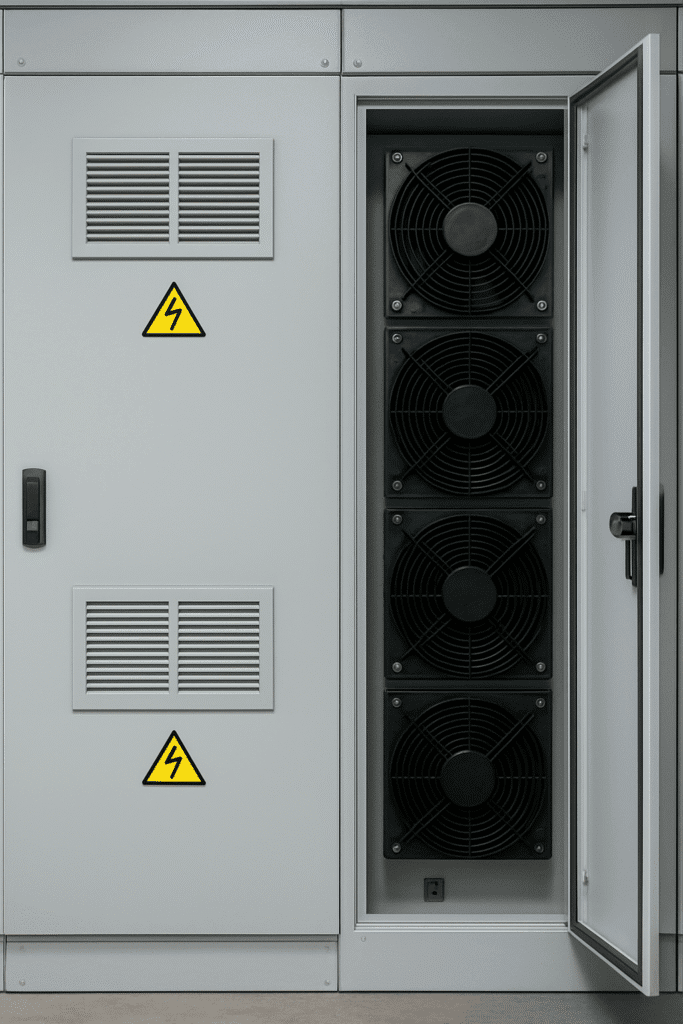Overheating ruins equipment. Static pressure silently cuts airflow, killing cooling efficiency. Want to protect your enclosures? Let’s uncover this hidden issue.
Static pressure is air resistance in enclosures. It lowers fan airflow, reduces cooling, and risks overheating. Proper fan selection and design optimize performance for wind turbines and EV chargers.
We’ve seen clients lose thousands due to cooling failures. Stick with us to learn how static pressure affects your systems and how to fix it.

What Is Static Pressure and Why Does It Matter for Enclosure Cooling?
Static pressure is the resistance to airflow in an enclosure, measured in Pascals or inches of water. Fans fight this resistance to cool components. High static pressure reduces airflow, making cooling less effective. This matters for B2B applications like wind turbines or EV charging piles, where overheating can stop operations.
Why It Matters
| Factor | Impact |
| Airflow Reduction | High pressure cuts fan output by 30-50%, risking equipment failure. |
| Energy Costs | Fans work harder, increasing power use in industrial setups. |
| Equipment Longevity | Poor cooling shortens component life in critical systems. |
In wind turbine control cabinets, dense filters raise static pressure. I once helped a client whose turbines shut down due to overheating. We switched to high-pressure axial fans, solving the issue. For EV chargers, consistent cooling prevents downtime, ensuring reliability for users.
How Does Static Pressure Affect Fan Performance in Electrical Enclosures?
High static pressure chokes fan airflow. A 200 CFM axial fan might drop to 100 CFM in a tight enclosure. This causes overheating, especially in packed electrical cabinets. Different fans handle pressure differently.
Fan Types Comparison
| Fan Type | Performance in High Static Pressure |
| Axial Fans | Struggle, losing airflow quickly. |
| Centrifugal Fans | Maintain airflow better under pressure. |
| Fan Filters | Block dust but increase pressure, needing strong fans. |
Overheating is a pain point. In energy storage systems, I’ve seen PLCs fail because fans couldn’t push enough air. Centrifugal fans often outperform axial fans in these setups. Fan filters, while protecting against dust, can clog and worsen pressure, leading to costly downtime.
What Are the Common Causes of High Static Pressure in Enclosures?
Restricted airflow is the main culprit. Dense filters, small vents, or crowded components create resistance. Dust, sand, or humidity makes it worse, especially in harsh environments like wind farms.
Common Causes
| Cause | Effect |
| Dense Filters | Trap dust but block airflow, raising pressure. |
| Small Vents | Limit air entry, choking fans. |
| Dust/Sand | Clogs filters, common in energy storage systems. |
In a recycling plant project, dust-clogged filters spiked static pressure, halting production. Humidity in coastal wind farms also clogs filters, reducing cooling. Energy storage cabinets often face similar issues, with sand and moisture increasing maintenance needs.
How Can You Measure and Manage Static Pressure for Optimal Cooling?
Measuring static pressure helps you catch issues early. Use tools like manometers or differential pressure sensors. To manage it, focus on design and maintenance.
Management Tips
| Action | Benefit |
| Larger Vents | Reduces airflow resistance by 15-20%. |
| High-Performance Fans | Maintains CFM in tough conditions. |
| Regular Filter Cleaning | Prevents clogs, ensuring consistent airflow. |
I recommend checking pressure monthly in dusty environments. In one factory automation project, we added larger vents, cutting pressure significantly. Clean filters regularly to avoid surprises, especially in energy storage systems where downtime is expensive.
Which Cooling Solutions Perform Best in High-Static-Pressure Environments?
Centrifugal fans shine in high-pressure setups. Vortex coolers also work well for extreme conditions. Fan filters are key in dusty environments, but they need strong fans to overcome resistance.
Recommended Solutions
| Solution | Best Use Case |
| Centrifugal Fans | High-pressure enclosures like EV chargers. |
| Vortex Coolers | Extreme heat in industrial settings. |
| Fan Filters | Dust-heavy wind farms. |
For wind farms, I suggest LEIPOLE’s centrifugal fans with high-pressure ratings. In energy storage, heaters and thermostats control humidity, protecting components. These solutions keep systems running smoothly, even in tough conditions.
How Can Proper Fan Selection Prevent Downtime in Critical Applications?
Choosing the right fan saves money and prevents failures. Focus on static pressure ratings and application needs. A checklist helps engineers and procurement managers make smart choices.
Fan Selection Checklist
| Criteria | Consideration |
| Static Pressure | Match fan to enclosure resistance. |
| Application | EV chargers need high-pressure fans. |
| Maintenance | Choose easy-to-clean filters. |
In EV charging piles, high-pressure centrifugal fans ensure reliability. I once worked with a client who cut downtime by 30% after upgrading fans. Proper selection boosts reliability and saves costs for B2B clients.
Why Is Static Pressure Critical for Wind Farms and Energy Storage Systems?
Wind turbines face unique challenges. Generator cooling requires strong airflow, but sand and dust clog filters, raising static pressure. Energy storage PCS units need consistent cooling to avoid shutdowns.
Challenges
| System | Static Pressure Issue |
| Wind Turbines | Dust clogs filters, reducing generator cooling. |
| Energy Storage | Humidity and sand increase pressure in PCS units. |
In cold weather, wind turbine rotors struggle to start if cooling fails. I’ve seen rooftop fan filters in energy storage systems fail due to sand buildup. High-pressure fans and regular maintenance are critical to keep these systems running.
How Can You Optimize Enclosure Cooling to Boost Equipment Lifespan?
Balancing static pressure and airflow is key. Use high-performance fans, optimize enclosure layouts, and maintain filters. These steps reduce heat stress on components, extending equipment life.
Optimization Strategies
| Strategy | Outcome |
| High-Pressure Fans | Ensures consistent cooling. |
| Streamlined Design | Lowers resistance, improving airflow. |
| Regular Maintenance | Prevents clogs, reducing downtime. |
I always tell clients to consult cooling experts. Tailored solutions, like LEIPOLE’s fan filters, save money long-term. Good cooling means less maintenance and longer-lasting equipment.
Conclusion
Static pressure hurts cooling but is manageable. Use high-pressure fans, optimize designs, and maintain filters to boost equipment life and reliability.




